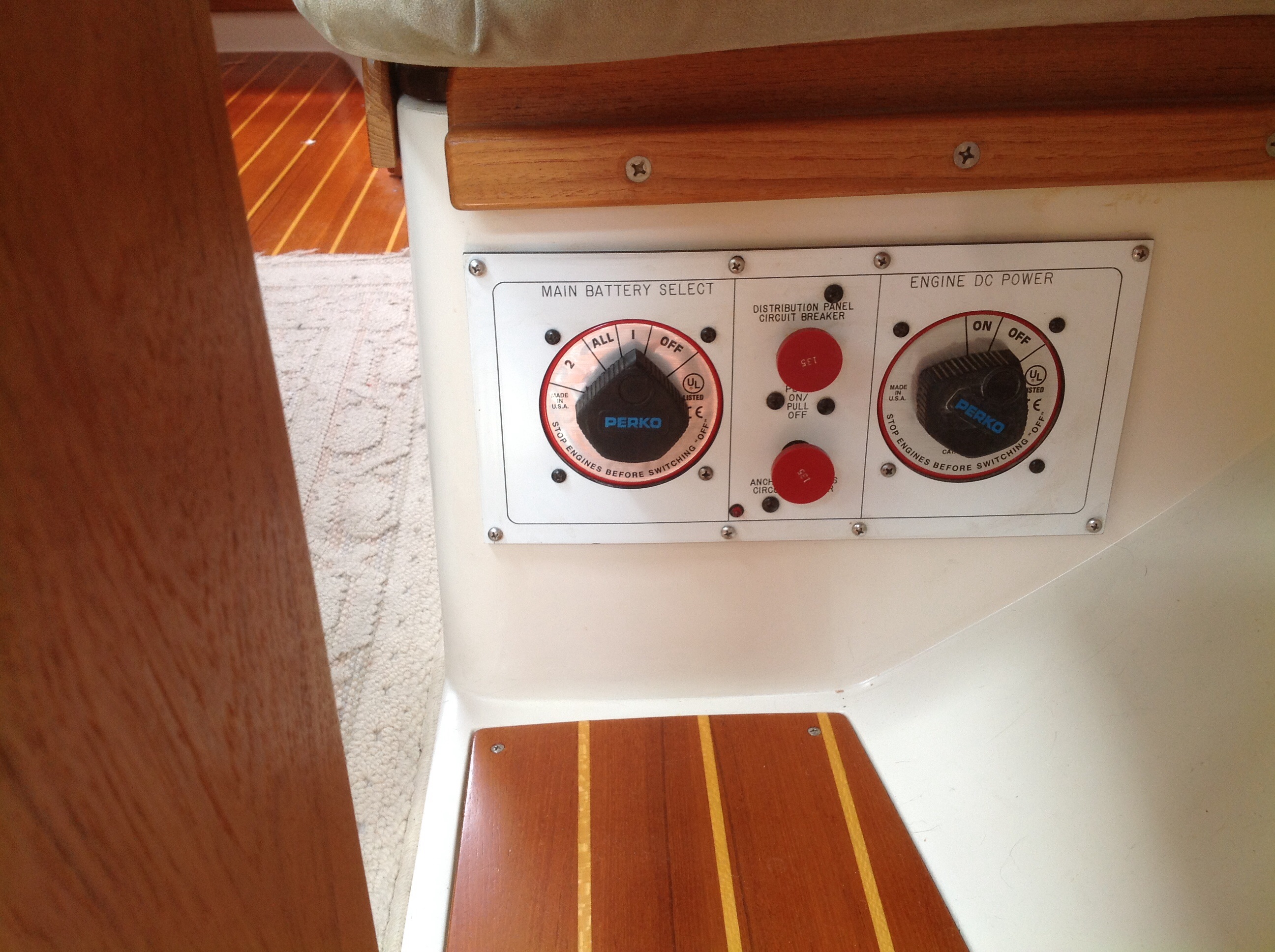Have a 2000 Catalina 36 MK2. Last Sunday, boat started perfect. Monday afternoon, no power. Monster deep cycle batteries felt hot and had acid bubbling. Due to age of batteries (4 years old???) . What would have caused the overnight failure? Had the marina replace Two house deep cycle batteries (yup, the monsters and spare starter battery under the sink). What is the proper procedure to test the amperage of the charger? Marina mechanic told me initial amperage drawn would be 30-40 amps and then dribble down to less than two amps as the batteries got charged. Said if trickle rate was too high, the batteries would get fried. Think the batteries that were replaced were 4 years old, so I have no gripes about needing to replace them. How do I check to see that the charger is going down to trickle rate ? I have a Sperry DM-350 tester and get high jacked on Internet to other sites when trying to get the operating instructions on that unit. I believe the electrical system is factory original and not been tampered with by the two previous owners. Boat has been excellent. Systems appear to be working just fine. Going sailing!!! Advice for non electrically trained guy would be appreciated.
peter g
2000 C36, MK2, Hull. #1897
wonderful, wonderful, wonderful ! ! !. 5 th Catalina




Minor bubbles and a battery getting warm during charging can be normal. Here's the manual on your meter: http://files.powerprodllc.com/~/media/inRiver/DM-350A_USE_0.pdf?isdartitem=true
You can tell if a multi-stage charger is doing it's job by measuring the voltage. Bulk target is about 14.4 volts and float is about 13.8 volts. Battery "at rest" voltage (no charge and no discharge) should stabilize at 12.6 volts.
Some chargers just have a timer to go from bulk to float and some calculate when to do this. If your batteries never go into float, chances are the charger is defective or you have a bad battery. Given that your battery bank dies when off the charger and your charger seems to be working overtime to bring the battery back up, my guess is you have a shorted cell.
If you have lead acid batteries, specific gravity by hydrometer is one method to determine the state-of-charge of the individual cells. More sophisticated battery testing requires additional tools and knowledge that are best left up professionals.
Nick Caballero
Retired C36/375IA Mk II Technical Editor
Nick, thank you for your response in a timely manner. Your answers are right on. The new batteries floated to 12.6 V. Other stuff mentioned best left to professionals. My boat runs great and this puts wife and I at ease.
Peter & Janice
peter g
2000 C36, MK2, Hull. #1897
wonderful, wonderful, wonderful ! ! !. 5 th Catalina
I had the marina mechanic out to boat yesterday. As you look straight down into the seat area that holds the charger and then AC unit, the charger is against cabinet side parallel the bilge. Two inches away is the AC unit. There is a small amp meter on the charger, two inches down from the top of the charger, and ONLY way to read the meter is to use a mirror. Otherwise I would not have known there was an amp meter on charger. All is working FINE!
peter g
2000 C36, MK2, Hull. #1897
wonderful, wonderful, wonderful ! ! !. 5 th Catalina